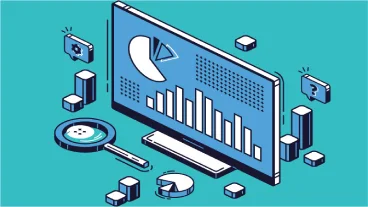Overview
Course Description
The Computer Organization and Operating System course are designed to give you an overview of the different operating systems and their components.This course teaches you the principles of computer architecture and organization. It covers digital logic, machine-level data representation, ALU design, memory system hierarchy, pipelining, and communications.
What you'll learn
- How to use Computer organization and architecture is the study of computer systems and how they are organized and structured.
- How Computer organization use and organize data and instructions to solve problems.
- How to use large number of libraries that help software developers connect to lower-level system functions. Assembler language is a very detailed language that helps systems programmers access hardware features efficiently.
- There are two of the most important aspects of computer architecture.Instruction set architecture is one of the most important parts of a computer, providing an interface between lower-level software and hardware.
- You should includes concepts such as the relational model, joins operation, SQL, transaction, and functional dependency.
Course Content
Computer Arithmetic Operations
-
Lecture 2.1 Introduction to logic gates, Boolean Algebra
-
Lecture 2.2 Data Representation-Number system
-
Lecture 2.3 Floating point representation, Signed numbers
-
Lecture 2.4 Binary Arithmetic, 1’s and 2’s Complements Arithmetic
-
Lecture 2.5 Binary adder, 2’s Complement method for multiplication,
Memory Organization
-
Lecture 4.1 Characteristics of Memory Systems, Type of memories
-
Lecture 4.2 Main memory, Static & Dynamic memories, Secondary Memory
-
Lecture 4.3 Performance Considerations, Cache Memory with mapping
-
Lecture 4.4 Address memory used pages, page replacement
-
Lecture 4.5 Introduction to RAID
Linux Basics
-
Lecture 7.1 Open source, Overview of Linux, Basic Linux Commands
-
Lecture 7.2 Some Important Directories, Inodes, Current Working Directory
-
Lecture 7.3 Changing Directories, Listing Directory Contents
-
Lecture 7.4 Fundamental file types, Hard Links, Symbolic
-
Lecture 7.5 Viewing and Working with Large Text Files
Process Management and Shell Script
-
Lecture 8.1 Process Relationship, Process states, Process State transitions
-
Lecture 8.2 Process Control Block, Context switching
-
Lecture 8.3 – Concept of multithreads, Listing Processes
-
Lecture 8.4 Foreground and background Processes
-
Lecture 8.5 Sending Signals to Processes.
About Us
TECHINAUT
A LEVEL
100+ Courses
20+ Faculty
Industry Expert
45000+ students enrolled
UI/UX Designer, with 7+ Years Experience. Guarantee of High Quality Work.
Skills: Web Design, UI Design, UX/UI Design, Mobile Design, User Interface Design, Sketch, Photoshop, GUI, Html, Css, Grid Systems, Typography, Minimal, Template, English, Bootstrap, Responsive Web Design, Pixel Perfect, Graphic Design, Corporate, Creative, Flat, Luxury and much more.
Available for:
- 1. Full Time Office Work
- 2. Remote Work
- 3. Freelance
- 4. Contract
- 5. Worldwide
Reviews
Nicole Brown
UX/UI Designer
“ This is the second Photoshop course I have completed with Cristian. Worth every penny and recommend it highly. To get the most out of this course, its best to to take the Beginner to Advanced course first. The sound and video quality is of a good standard. Thank you Cristian. “
Reply

Post A comment